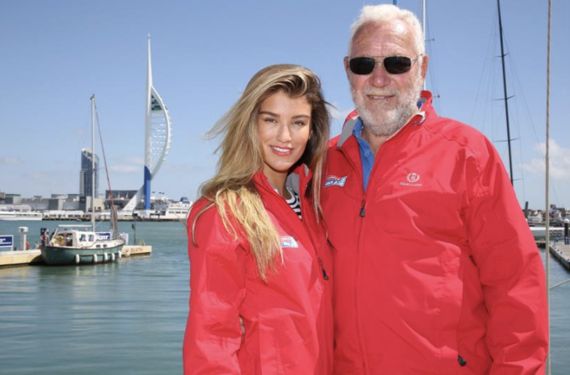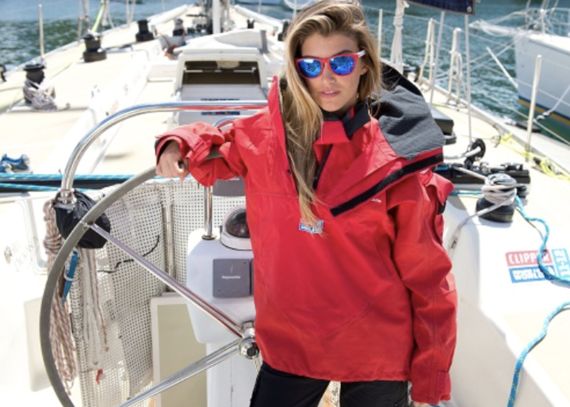
Back in the summer of 2015 I was asked by my manager 'Do you know how to sail?' I said no, why? He then explained that he had been speaking to the Clipper Round the World Yacht Race and they were interested in me taking part in their 2015-2016 event.
Sailing around the world, when I had never even stepped foot on a sailing boat before, whilst a daunting prospect was just the kind of new and exciting challenge I embrace inviting into my life. My business head on however, I wondered how much time would I need to commit to take part.
The race itself lasts 11 months, however I would only be required to join one of the eight legs - each of which last around 4-6 weeks on average. Plus four weeks of training at one of the Clipper bases either in Portsmouth or the in Sydney. My typically British answer was; of course I'm going to go to Australia. I have ceased to become surprised by the randomness of the opportunities that seem to come into my life - instead I try to see them as a blessing of new experience. But even with this attitude, nothing could have prepared me for the adventure I was about to go on down under.
I flew from a chilly London to beautiful breezy evening in Sydney Harbour as I prepared to board the yacht and meet my instructors and other trainees. The nerves finally kicked in, as one by one glamorous and sailor suited attired women showed up for the course. Women? I had been convinced I would be the only girl there (although I was told it was the first time the Clipper Race had had an all-girl group I later found out about a third of the total crew are female) I stared down at my own basic sportswear and I thought I am way out my depth here, I don't even know what I should be wearing let alone anything else!

The worries of my inadequacy plagued those first few days as I felt myself becoming very defensive of those around me. I am the kind of person that usually finds it easy to laugh at myself, yet each time someone on board would make a joke/comment about my lack of skills or dumb blonde model persona - I kept feeling the need to constantly prove myself as a worthy member of the crew. Thankfully I'm self aware enough that I could acknowledge this and try hard to take a deep breath and say you're 'good enough'.
It seemed however it had been a long time since I had truly been completely out of my comfort zone - with nobody I knew to speak to and no previous skills to draw on.
I felt like everyone was speaking a foreign language, it wasn't just learning the skills, it was also learning the nautical terms. My instructor would say for example; 'Amy go to starboard and winch the Yankee sail halyard' and I'm thinking what on earth does that mean!
The turning point however was when a new crewmember from Vietnam joined us in the form of Minh An, the only male to join so far. He spoke only a sentence in English and that was; his name and the fact he was from Vietnam. For me he truly put things in perspective. Although An, who worked on a tug boat for a living knew how to sail - he was so eminently grateful for the opportunity to compete in the Clipper Race that he basically learnt the English / English nautical language in 3 weeks with all the concentration he gave. And I thought to myself if this man can do this without even being able to communicate the same language as anyone here then I certainly could do it.
As the weeks continued - I grew more confident and learned about the race. I found out that the Clipper Race absolutely welcomes applicants with no sailing experience because it's allows the person to learn 'the clipper way'. About 40% of the crew are actually like me and have not had any previous experience before they start their training. It makes it a fantastic opportunity for literally anyone to take part in a global race - which really was the whole point of me signing up - To prove if you are willing to take up this challenge it's only yourself that holds you back.
Instead of seeing my crewmembers as competition (which as a competitive person in life I realised I tended to do) I started to see myself as part of a team - that without each other wouldn't get as far as leaving the port.

The act of hoisting the mainsail, lifting the heavy equipment and much of the process of sailing a 70ft yacht - simply cannot be done alone. Out in the middle of the ocean in life threatening conditions we cannot even rely on ourselves - together as a team is the only way to reach the other side. This realisation forced me to acknowledge I have spent most of my adult life as a singular, I have travelled alone, and pursued my career alone - Sailing made me realise that I had never actually been part of a team before - and forced me to finally learn to be part of one.
As you bond with your crew members , their own personal stories start to unravel. Their reasons for being there - from break-ups to dealing with death, to fighting cancer. How they raised the funds, and what they want to accomplish from the experience - the motivation for deciding to escape the world for 1-11 months on a small boat are usually pretty fascinating ones.
The first night I spent helming the boat, there was a storm. The rain shot at me, as the boat seared through the crashing waves at 180 degree angle. It was 3am and I'm gripping onto the helm for dear life knowing the best thing I can do is; simply keep going. Much like life itself, as Winston Churchill quoted 'When you're going through hell - keep going'. You do go through the most boundary pushing challenges with your crewmembers , but that's actually what forms the bond between you all. Knowing that you go through it together and prove to yourselves and each other than you can face that 50ft wave and get through it together. As frightening as that night was, it was the first time I truly understood why people love sailing so much, the adrenaline and freedom of it is nothing short of exhilarating.
After four weeks I took a deep breath as I finally returned to my normality by posing for a shoot that involved me running around the boat using the equipment unassisted as the photographer snapped away. I laughed as I thought back to the first shoot I had done with the Clipper Race PR in England with Sir Robin Knox Johnston before training began and I had posed with the equipment in the same way whilst in my head wondering what any of it was.

